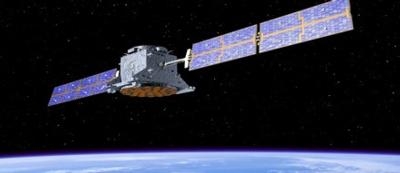Sat, Nov 10, 2018
Looking Into Migration Of The Command And Control System For Over 20 Spacecraft
Kratos Defense & Security Solutions has successfully completed the third phase of a pathfinder study for migrating the Command and Control System – Consolidated (CCS-C) ground system to the Enterprise Ground Services (EGS) architecture. CCS-C currently operates a fleet of over 20 Military Satellite Communications (MILSATCOM) satellites in four different constellations.

In phase 3, Kratos demonstrated the automated deployment of the MILSATCOM EGS (MEGS), using virtualized applications on the Space and Missile Systems Center (SMC)-provided Cooperative Research and Development Agreement (CRADA) Supply Chain Risk Management (SCRM) infrastructure hosted at the Space Management Battle Lab (SMBL). After successful deployment, the team demonstrated Kratos’ web-based user interface and automation capabilities. Traditionally, ground system capabilities take months or even years to deploy and test, however, with automated software deployment and dynamic allocation of resources employed by the Kratos team based on the EGS principles of deploying in a modern IT environment, the demonstration took less than ten minutes. This dynamic allocation of ground resources demonstrates the portability, resiliency and elasticity of the MEGS.
EGS is a critical enabling technology for the Air Force’s Space Enterprise Vision (SEV) focused on a sustainable, resilient space architecture that can respond to emerging threats and protect space-based assets. When implemented, EGS will result in a best of breed, service-based ground architecture for all Air Force spacecraft that will enable Air Force Space Command (AFSPC) to fight and win a war that extends into space. AFSPC is implementing EGS with prototyping activities to mature the concepts, technologies, EGS standards, and transition paths for legacy and future ground systems.
The Kratos study for MILSATCOM is a 27-month effort that consists of four phases and is an essential step in the evolution of CCS-C to exploit the benefits of EGS. Phase 3 concluded on 12 July with a successful demonstration. Phase 4 will be completed in December, 2018.
"This demonstration of phase three illustrates the capability of an EGS environment to be both resilient and elastic," said Larry Lind, Vice President, Kratos Federal Solutions Group. "Kratos’ involvement with EGS goes beyond the CCS-C/EGS interoperability study as we are actively involved in defining and refining the standards that will make EGS a reality.”
(Image provided with Kratos news release)
More News
From 2016 (YouTube Edition): The Canadian Forces Snowbirds Can Best Be Described As ‘Elegant’… EAA AirVenture 2016 was a great show and, in no small part, it was>[...]
Airplane Lunged Forward When It Was Stuck From Behind By A Tug That Was Towing An Unoccupied Airliner Analysis: At the conclusion of the air taxi flight, the flight crew were taxii>[...]
Aero Linx: International Stinson Club So you want to buy a Stinson. Well the Stinson is a GREAT value aircraft. The goal of the International Stinson Club is to preserve informatio>[...]
Request Full Route Clearance Used by pilots to request that the entire route of flight be read verbatim in an ATC clearance. Such request should be made to preclude receiving an AT>[...]
"Today's battlefield is adapting rapidly. By teaching our soldiers to understand how drones work and are built, we are giving them the skills to think creatively and apply emerging>[...]
 Classic Aero-TV: Pure Aerial Precision - The Snowbirds at AirVenture 2016
Classic Aero-TV: Pure Aerial Precision - The Snowbirds at AirVenture 2016 NTSB Final Report: Costruzioni Aeronautiche Tecna P2012 Traveller
NTSB Final Report: Costruzioni Aeronautiche Tecna P2012 Traveller ANN's Daily Aero-Linx (11.23.25)
ANN's Daily Aero-Linx (11.23.25) ANN's Daily Aero-Term (11.23.25): Request Full Route Clearance
ANN's Daily Aero-Term (11.23.25): Request Full Route Clearance Aero-News: Quote of the Day (11.23.25)
Aero-News: Quote of the Day (11.23.25)



